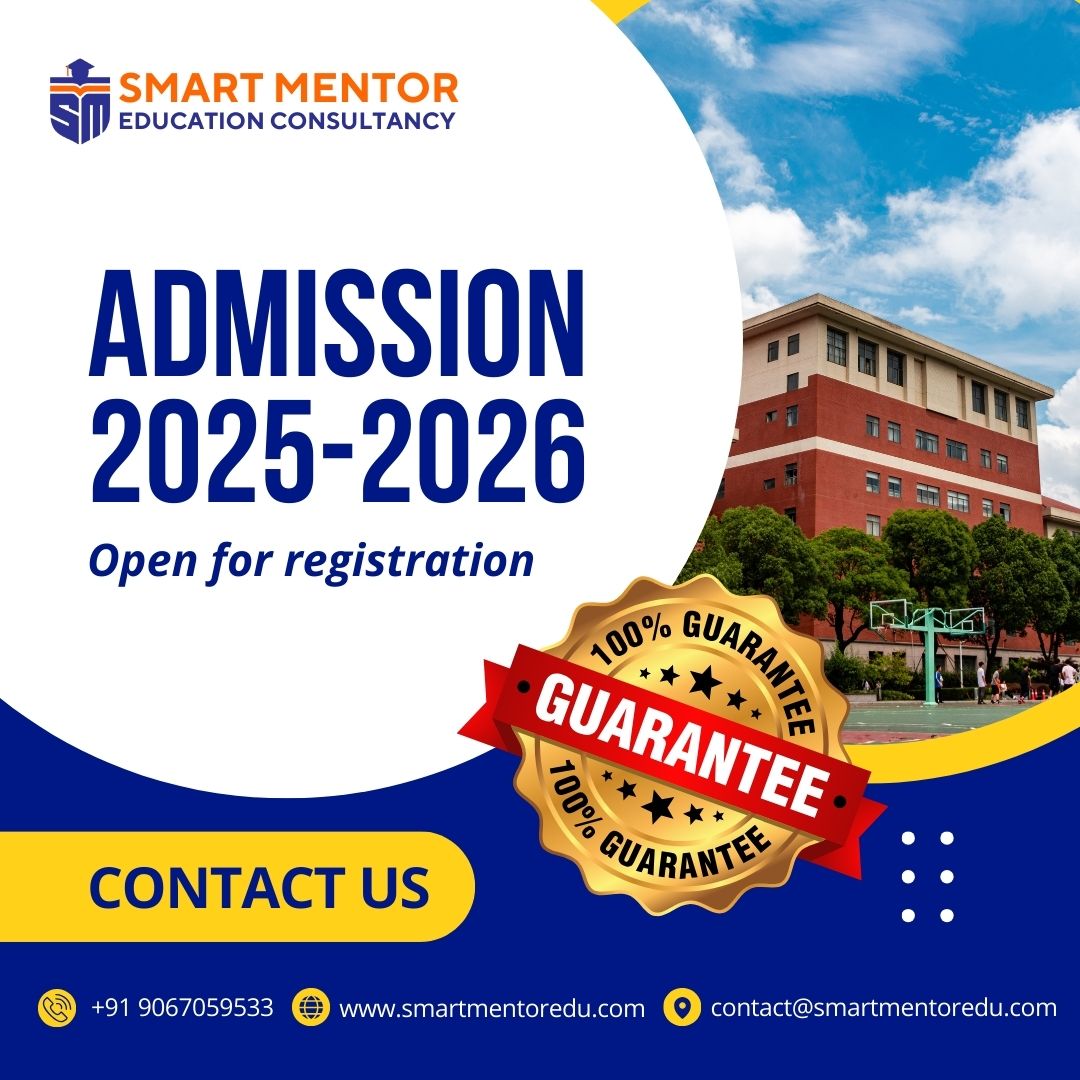
CUET: Complete Guide to Common University Entrance Test for Engineering Aspirants
The Common University Entrance Test (CUET), formerly known as CUCET (Central Universities Common Entrance Test), is a national-level entrance examination conducted by the National Testing Agency (NTA) for admission to undergraduate and postgraduate programs in central universities and other participating institutions across India. Introduced as a part of the National Education Policy (NEP) 2020, CUET aims to provide a single-window opportunity for students to seek admission in multiple universities through a standardized testing process.
For engineering aspirants, CUET offers a pathway to various technical programs in central universities, including B.Tech, B.E., and integrated programs. While JEE Main and JEE Advanced continue to be the primary entrance examinations for premier engineering institutions like IITs, NITs, and IIITs, CUET has emerged as a significant alternative route for students seeking quality engineering education in central universities.
The unified entrance examination reduces the burden on students who previously had to appear for multiple university-specific entrance tests. It also ensures standardization in the admission process across participating institutions, making it more streamlined and accessible for students from diverse backgrounds.
CUET Exam Pattern for Engineering Programs
CUET is conducted in a Computer-Based Test (CBT) format and divided into multiple sections:
Structure
- Section IA & IB: Language (13 Languages in IA & 20 Languages in IB)
- Section II: Domain-Specific Subjects
- Section III: General Test
For Engineering Aspirants
Engineering candidates typically focus on the following sections:
- Language Section: English or any other preferred language (40 questions/50 marks)
- Domain-Specific Subjects:
- Physics (40 questions/50 marks)
- Chemistry (40 questions/50 marks)
- Mathematics (40 questions/50 marks)
- General Test: General Knowledge, Current Affairs, General Mental Ability, Numerical Ability, Quantitative Reasoning, and Logical & Analytical Reasoning (60 questions/75 marks)
Exam Duration
- 45-60 minutes for each section (exact duration may vary)
- Total exam duration: Approximately 3-4 hours (depending on sections opted)
Marking Scheme
- +5 marks for each correct answer
- -1 mark for each incorrect answer (negative marking)
- 0 marks for unanswered questions
CUET Syllabus for Engineering Programs
1. Physics
Mechanics:
- Units and Dimensions
- Kinematics
- Laws of Motion
- Work, Energy, and Power
- Rotational Motion
- Gravitation
- Properties of Solids and Liquids
Thermodynamics:
- Thermal Properties of Matter
- Thermodynamics
- Kinetic Theory of Gases
- Heat Transfer
Electricity and Magnetism:
- Electrostatics
- Current Electricity
- Magnetic Effects of Current
- Magnetism
- Electromagnetic Induction
- Alternating Current
Optics and Modern Physics:
- Ray Optics
- Wave Optics
- Electromagnetic Waves
- Dual Nature of Matter and Radiation
- Atoms and Nuclei
- Electronic Devices
- Communication Systems
2. Chemistry
Physical Chemistry:
- Basic Concepts
- States of Matter
- Atomic Structure
- Chemical Bonding and Molecular Structure
- Chemical Thermodynamics
- Solutions
- Equilibrium
- Redox Reactions and Electrochemistry
- Chemical Kinetics
- Surface Chemistry
Inorganic Chemistry:
- Classification of Elements and Periodicity
- General Principles of Metallurgy
- Hydrogen
- s-Block Elements
- p-Block Elements
- d and f-Block Elements
- Coordination Compounds
- Environmental Chemistry
Organic Chemistry:
- Basic Concepts
- Hydrocarbons
- Haloalkanes and Haloarenes
- Alcohols, Phenols, and Ethers
- Aldehydes, Ketones, and Carboxylic Acids
- Amines
- Biomolecules
- Polymers
- Chemistry in Everyday Life
3. Mathematics
Algebra:
- Complex Numbers
- Quadratic Equations
- Matrices and Determinants
- Sets, Relations, and Functions
- Mathematical Induction
- Permutations and Combinations
- Binomial Theorem
- Sequences and Series
Calculus:
- Limits, Continuity, and Differentiability
- Differentiation
- Applications of Derivatives
- Indefinite Integrals
- Definite Integrals
- Applications of Integrals
- Differential Equations
Coordinate Geometry:
- Straight Lines
- Circles
- Conic Sections
- Three-Dimensional Geometry
Vector Algebra:
- Vectors and Scalars
- Scalar and Vector Products
Trigonometry:
- Trigonometric Functions and Identities
- Trigonometric Equations
- Inverse Trigonometric Functions
Statistics and Probability:
- Measures of Dispersion
- Probability
- Random Variables
- Bernoulli Trials and Binomial Distribution
4. General Test
- General Knowledge: Current Affairs, Static GK, Books and Authors
- Reasoning: Verbal Reasoning, Logical Reasoning, Analytical Reasoning
- Quantitative Ability: Basic Mathematical Concepts, Data Interpretation
- Verbal Ability: Reading Comprehension, Vocabulary, Grammar
CUET Preparation Strategy for Engineering Aspirants
1. Recommended Study Materials
Physics:
- NCERT Physics Class 11 & 12 (foundation)
- Concepts of Physics by H.C. Verma
- Understanding Physics series by D.C. Pandey
- Previous years’ CUET question papers
Chemistry:
- NCERT Chemistry Class 11 & 12 (must-read)
- Physical Chemistry by O.P. Tandon
- Organic Chemistry by Morrison & Boyd (reference)
- Concise Inorganic Chemistry by J.D. Lee (reference)
Mathematics:
- NCERT Mathematics Class 11 & 12 (foundation)
- R.D. Sharma for practice
- Objective Mathematics by R.S. Aggarwal
- Previous years’ CUET question papers
General Test:
- Current Affairs magazines and newspapers
- General Knowledge compendium
- Logical Reasoning by R.S. Aggarwal
- Quantitative Aptitude by R.S. Aggarwal
2. Effective Time Management
- Long-term Planning (3-4 months):
- First month: Complete the basic syllabus with focus on NCERT
- Second month: Advanced concepts and application-based questions
- Third month: Mock tests, previous years’ papers, and revision
- Final weeks: Comprehensive revision and test-taking strategies
- Daily Schedule:
- 2 hours for Physics
- 2 hours for Chemistry
- 2 hours for Mathematics
- 1 hour for General Test preparation
- Regular breaks using the Pomodoro technique
3. Subject-wise Preparation Tips
Physics:
- Focus on understanding concepts rather than memorization
- Create a formula sheet for quick revision
- Practice numerical problems extensively
- Pay special attention to frequently asked topics like mechanics and electromagnetism
- Connect theoretical concepts with practical applications
Chemistry:
- Master NCERT content thoroughly
- Create short notes for reactions and mechanisms
- Practice numerical problems in physical chemistry
- Create flashcards for organic chemistry reactions
- Focus on important topics like chemical bonding, thermodynamics, and organic reaction mechanisms
Mathematics:
- Practice a variety of problems for each concept
- Learn shortcuts for quick calculations
- Focus on calculus, coordinate geometry, and algebra
- Develop speed and accuracy through timed practice
- Master algebraic manipulations and substitutions
General Test:
- Read newspapers and magazines regularly
- Practice reasoning puzzles daily
- Improve vocabulary and reading speed
- Develop quick calculation techniques for data interpretation
- Take regular mini-tests for this section
4. Practice Tests and Assessment
- Take at least 15-20 full-length CUET mock tests
- Practice section-wise tests to strengthen individual subjects
- Analyze performance after each test to identify weak areas
- Maintain an error log to track and revisit mistakes
- Time yourself strictly to improve speed and accuracy
Central Universities Offering Engineering Programs through CUET
Several central universities across India offer engineering programs through CUET admissions:
- Delhi University (DU)
- Faculty of Technology
- Programs: B.Tech in various specializations
- Banaras Hindu University (BHU)
- Institute of Technology
- Programs: B.Tech and Integrated Dual Degree Programs
- Jamia Millia Islamia (JMI)
- Faculty of Engineering and Technology
- Programs: B.Tech in various disciplines
- Aligarh Muslim University (AMU)
- Zakir Husain College of Engineering and Technology
- Programs: B.Tech in multiple branches
- Central University of Jharkhand (CUJ)
- Department of Engineering and Technology
- Programs: B.Tech in Computer Science, Electrical Engineering, etc.
- Central University of Rajasthan
- Department of Computer Science and Engineering
- Programs: B.Tech in Computer Science
- Visva-Bharati University
- Department of Computer and System Sciences
- Programs: B.Tech in Computer Science
- Central University of Haryana
- School of Engineering and Technology
- Programs: B.Tech in Computer Science, Electronics, etc.
- Central University of Tamil Nadu
- School of Technology
- Programs: B.Tech in Computer Science and Engineering
- Central University of Kashmir
- Department of Information Technology
- Programs: B.Tech in Information Technology
Popular B.Tech Specializations Available
- Computer Science and Engineering
- Electronics and Communication Engineering
- Electrical Engineering
- Mechanical Engineering
- Civil Engineering
- Information Technology
- Artificial Intelligence and Data Science
- Biotechnology
- Chemical Engineering
- Instrumentation Engineering
CUET Admission Process for Engineering Programs
- Online Registration: Register on the official CUET website during the application period
- Application Submission: Complete the application form with all necessary details
- Choosing Universities and Programs: Select preferred universities and engineering programs
- Fee Payment: Pay the application fee online
- Admit Card Download: Download the admit card before the exam date
- CUET Exam: Appear for the computer-based test
- Results Declaration: Check results on the official website
- University-specific Counseling:
- Register for counseling at individual universities
- Document verification process
- Merit list preparation based on CUET scores
- Seat allotment based on merit and preferences
- Fee payment and confirmation of admission
CUET vs. Other Engineering Entrance Exams
CUET differs from other engineering entrance exams in several key aspects:
Conducting Body:
- CUET: National Testing Agency (NTA)
- JEE Main: National Testing Agency (NTA)
- JEE Advanced: One of the IITs on a rotational basis
Purpose:
- CUET: Admission to Central Universities
- JEE Main: Admission to NITs, IIITs, and CFTIs
- JEE Advanced: Admission to IITs
Difficulty Level:
- CUET: Moderate
- JEE Main: Moderate to High
- JEE Advanced: Very High
Exam Pattern:
- CUET: Multiple sections including Domain Knowledge, Language, and General Test
- JEE Main: Single paper with Physics, Chemistry, and Mathematics
- JEE Advanced: Two papers with multiple sections and question formats
Syllabus Coverage:
- CUET: Class 11-12 syllabus with more focus on NCERT
- JEE Main: Class 11-12 syllabus with advanced concepts
- JEE Advanced: Advanced concepts with application-based questions
Number of Attempts:
- CUET: Once per academic year
- JEE Main: Typically twice per year
- JEE Advanced: Maximum 2 attempts in consecutive years
Competition Level:
- CUET: Moderate
- JEE Main: High
- JEE Advanced: Extremely High
Tips for CUET Exam Day
- Reach the exam center at least 45 minutes before the scheduled time
- Carry admit card and valid photo ID proof
- Read all instructions carefully before starting the exam
- Attempt easy questions first to build confidence
- Manage time efficiently across all sections
- Remember that negative marking applies (-1 for wrong answers)
- Skip difficult questions initially and return to them later if time permits
- Review your answers if time allows
- Stay calm and focused throughout the examination
Advantages of CUET for Engineering Aspirants
- Single Exam, Multiple Universities: Apply to multiple central universities through one entrance exam
- NCERT-based Syllabus: More aligned with school curriculum, making preparation more manageable
- Balanced Difficulty Level: Generally considered more approachable than JEE Advanced
- Holistic Assessment: Tests language proficiency and general awareness alongside domain knowledge
- Diverse Opportunities: Access to engineering programs in culturally and academically rich central universities
- Quality Education: Central universities offer quality engineering education with affordable fee structures
- Alternative Pathway: Provides an alternative route to engineering education beyond JEE Main/Advanced
- Interdisciplinary Exposure: Central universities often offer more interdisciplinary learning environments
Conclusion
CUET has emerged as a significant pathway for engineering aspirants seeking quality education in central universities across India. While it may not replace specialized engineering entrance exams like JEE Main and JEE Advanced, it offers a valuable alternative that focuses on a more holistic assessment of candidates’ abilities.
The exam’s standardized format, coupled with its wider acceptance across central universities, makes it an attractive option for students who wish to keep their options open. The NCERT-focused syllabus also makes preparation more manageable, especially for those already preparing for board examinations.
Interested in Direct Admission in India?
Get Direct Admission in India’s Top Universities / College.





